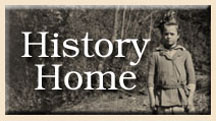

The American Settlement House Movement
Among the many issues that animated Progressive Era American reformers,
and which prompted them to take decisive action, was the plight of the nation’s
urban poor. In particular, they found the squalid, unsanitary conditions in
which the urban poor lived to be cause for concern, not only because such
conditions threatened the health of a given city’s entire population,
but because poverty and discontent tended to fuel anti-democratic sentiments
-- most notably a loyalty to corrupt political “machines,” which
pandered to poor immigrants in exchange for votes, but also to labor organizers
and anarchists -- that were deemed by many to be a threat to traditional American
civic life. Progressives thus moved to establish “social settlements”
in urban tenement neighborhoods, the purpose of which was to provide residents
with health care, vocational education, recreational opportunities, and other
hard to come by services, as well as to help defuse “dangerous”
political movements at their source, before they had a chance to take root.
The settlement house concept actually originated in England, a nation that
had, by the late nineteenth century, long-since grappled with the ill effects
of industrialization, urbanization, and immigration. More specifically, the
idea was the brainchild of Anglican curate Samuel Barnett who, along with
his wife Henrietta, saw it as his Christian duty to provide education, fellowship,
and social services to the citizens of London’s squalid, crime-ridden
Whitechapel neighborhood. In 1884, Canon Barnett opened the doors of his mission,
Toynbee Hall, to affluent Oxford University students. His goal in doing so
was to provide England’s young social/economic “elite” an
opportunity to live and work among London’s urban immigrant poor, the
hope being that they would take what they had learned and become activists
on behalf of the less fortunate. Needless to say, Toynbee, with its radical
notions of wealth, poverty, and social obligation, proved an irresistible
beacon to young, Progressive Era American idealists. Among those who spent
time there, and who later served as pioneers in the American Settlement House
Movement, were Stanton Coit, founder of the New York’s Neighborhood
Guild (1886); Vida Scudder, Jean Fine, and Helen Rand, founders of the College
Settlement Association (1887); and Jane Addams founder of Chicago’s
Hull House (1889). Of these pioneers, let us focus briefly on Addams, for
although she was only one among many American settlement workers, she was
the most well-known of them all.
Like many of the college educated women of her generation, Jane Addams struggled
after graduation to find her place in the world. And for good reason: Progressive
Era Americans, for all their talk of reform and change, clung to traditional,
one might even say “Victorian,” gender roles. Simply put, men
were encouraged to have careers and engage in political activity, while women,
if they worked at all, were expected to engage in such “nurturing”
endeavors as nursing or teaching. In most cases, it was deemed vastly preferable
for women to forego professional careers altogether, marry, and then devote
their energy to raising upstanding, democratically-minded children.
For an ambitious, educated woman such as Addams, however, a life spent performing
domestic tasks was not only unappealing -- it was tantamount to intellectual
and vocational failure. But there were few options available to her, or at
least none that would provide her with the leadership opportunities and civic/political
involvement that her education had taught her to crave. The untimely death
of her father in 1881 served only to worsen matters, for it robbed young Jane
of her primary confidant and source of intellectual encouragement. The once-vibrant
Addams soon fell into a state of despondency, becoming, in her own words,
“an unhappy woman, whose vitality [was] consumed by vain regrets and
desires.”
| <<< Back |
 |
|